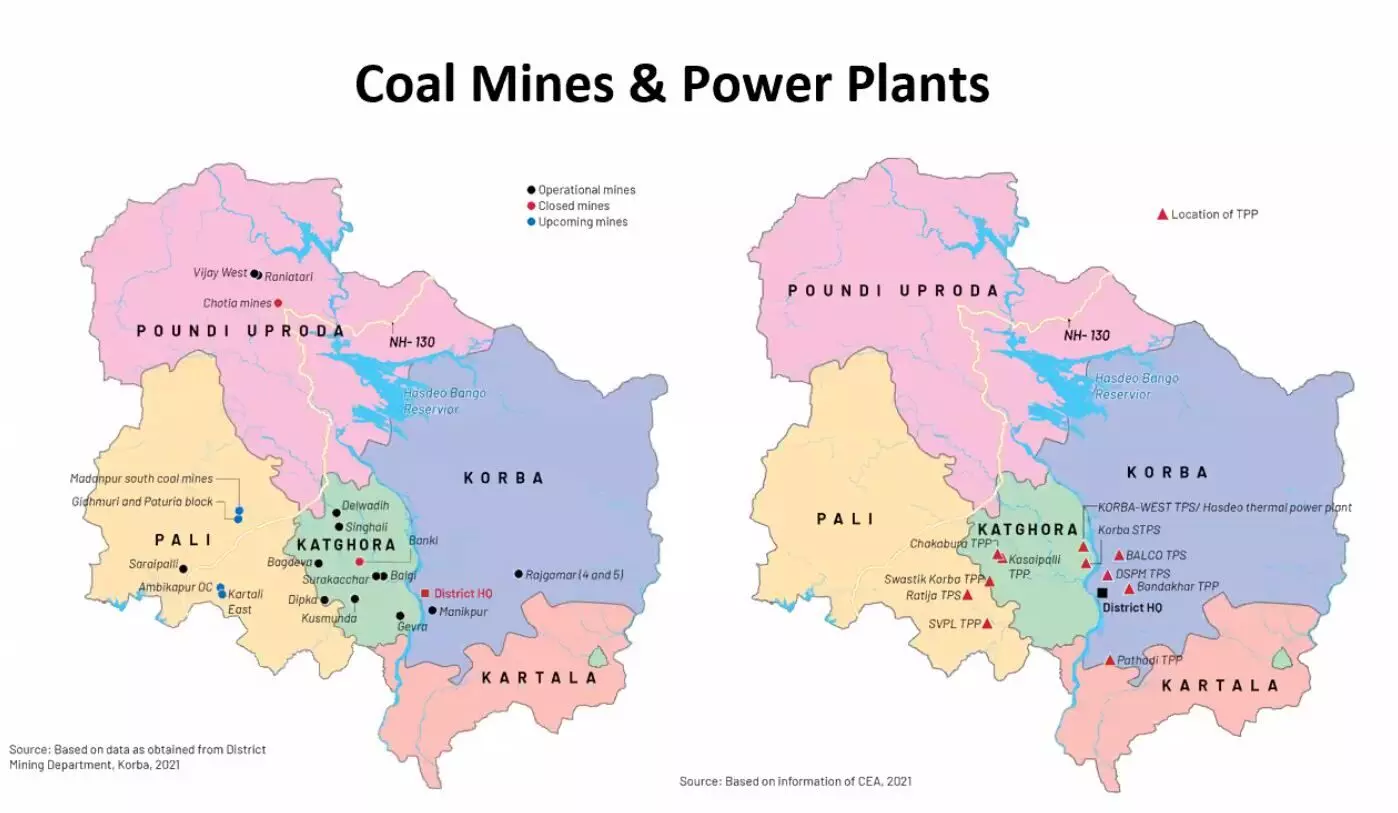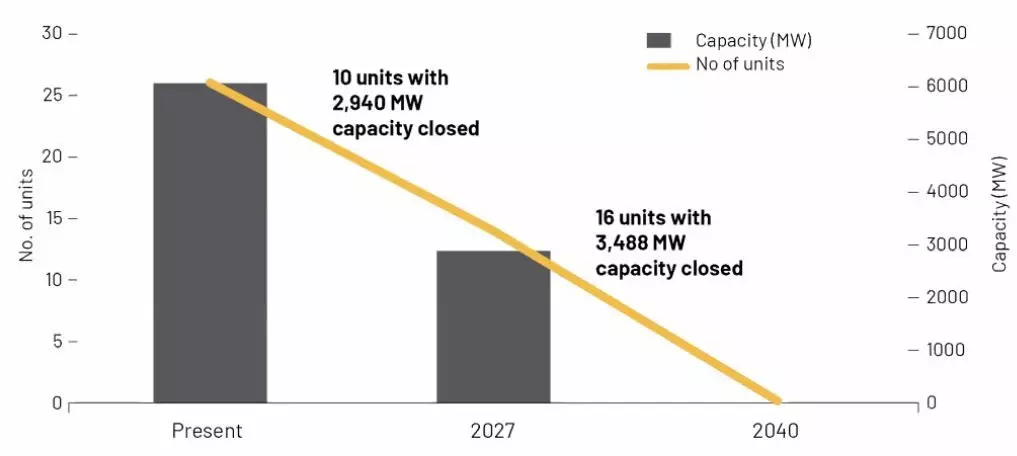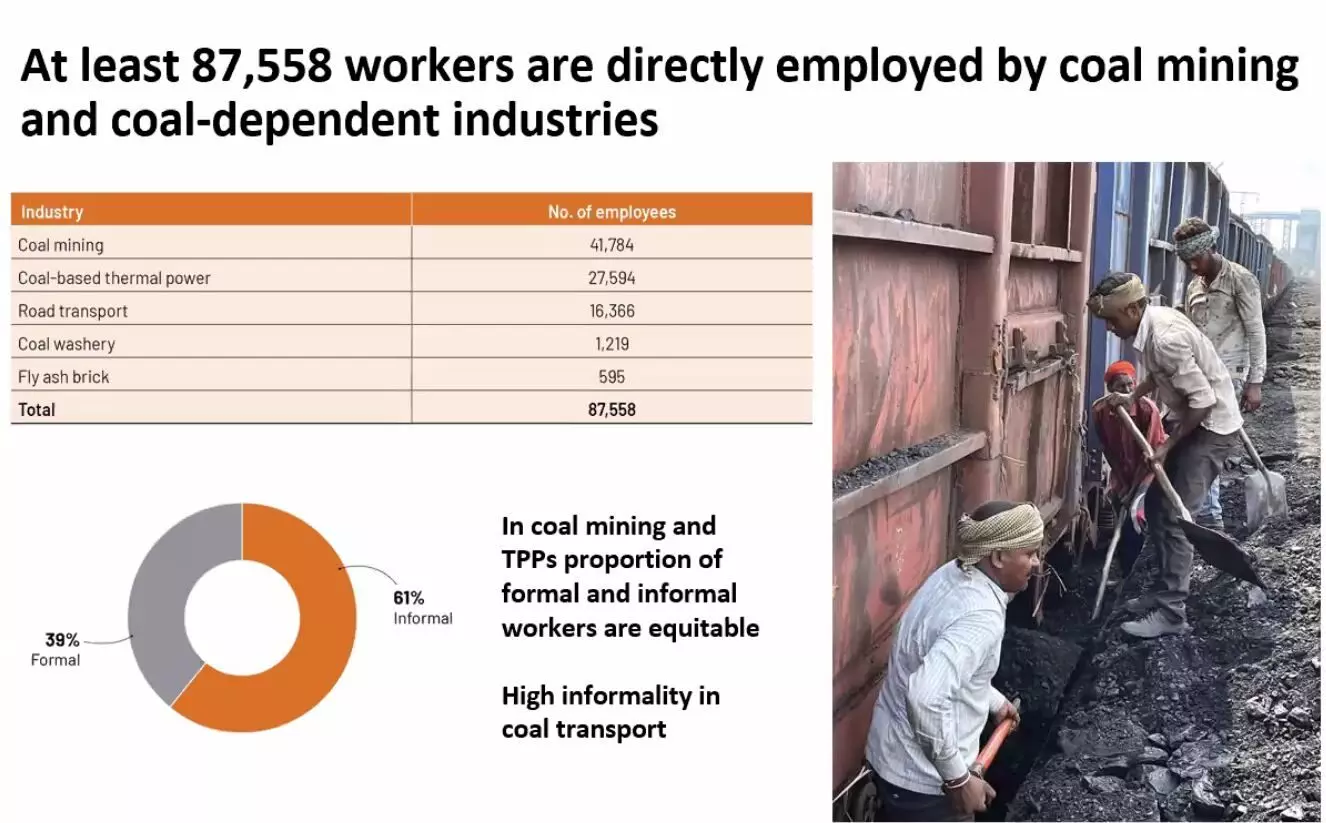Chhattisgarh’s Korba district is India’s biggest coal-producing district and one of the top coal-power producers in the country. At 117 million tonnes per year, the district contributes about 16 per cent of India’s total coal production. Korba is highly dependent on the coal industry for jobs and growth as over 60 per cent of the district’s GDP and one-in-five jobs are from coal mining and coal-related industries in the district. As dependence on coal is being phased out, Korba is expected to face the implications of the energy transition well before 2030. This puts the livelihood of workers, especially informal workers, in the tribal district at risk.
These are the findings of a recent study released on February 16 by a New Delhi based environment think tank International Forum for Environment, Sustainability & Technology (iFOREST).
The report Korba: Planning a Just Transition for India’s Biggest Coal and Thermal Power District highlights that the energy transition, propelled by the fast-growing and cost-competitive renewable energy sector, coupled with declining coal reserves and unprofitable coal mines, necessitates ‘Just Transition’.
“India’s biggest coal and thermal power districts face a twin challenge. The first is the energy transition propelled by the fast-growing and cost-competitive renewable energy sector. The second is the declining coal reserves, unprofitable coal mines, and an aging thermal power fleet,” Chandra Bhushan, President and CEO, iFOREST, was quoted in a press statement dated February 16.
“A combination of these will lead to a significant economic disruption in coal regions in this decade and beyond. This necessitates just transition planning to start urgently. Districts like Korba will need to start planning for the future to prevent socio-economic disruptions,” he added.

Korba has 13 operational mines and four more mines are in the pipeline. Of the operational mines, 10 are loss-making, and the three profitable mines – Gevra, Kusmunda and Dipka – produce 95 per cent of the coal. But Korba will start facing transition challenges in this decade, warned the iFOREST researchers.
They pointed out that all coal mines in Korba could be closed down in phases in the next 30 years (by 2050) because the resources will run out. Big mines such as Gevra and Kusmunda have a remaining life of 15 years. Coal mine closure has been largely triggered by unprofitability of the coal industry.

Nearly half of the thermal power units are over 30 years old and are slated to retire by 2027; the latest plant will reach the age of 27 years by 2040.
Rural tribal workers
In Korba, one in five workers are directly dependent on the coal industry, power plants, and coal transport. At least 87,558 workers are directly employed by coal mining and coal dependent industries.

Now, the biggest challenge is the re-employment of informal workers, who constitute over 60 per cent of the workforce in the coal industry. About 40 per cent informal workers in coal mining earn below Rs 10,000 per month. Most informal workers have poor education and skill levels. They will require job support, suggested the iFOREST researchers.
“We must ensure that life and livelihood sustenance for regions impacted by energy transition must be ensured. State government alone will not be able to garner the resources for it. More collaborative support will be required for Just Transition,” said TS Singh Deo, Minister for Panchayat and Rural Development, Chhattisgarh, while releasing the report on February 16.
Attended and addressed a webinar on, KORBA -Planning a Just Transition for India’s Biggest Coal and Power District. Our focus & attention have to be on creating a sustainable environment for nature to thrive with non-renewable energy sources & technology. https://t.co/aXDszAnkMC
— T S Singhdeo (@TS_SinghDeo) February 16, 2022
Besides, Korba has an aging formal workforce – at least 70 per cent of the South Eastern Coalfields Limited (SECL) and National Thermal Power Corporation Limited (NTPC) workers are 40-60 years of age. “Their retirement can be synchronised with plant and mine closures. The biggest challenge is the re-employment of informal workers and skilling for the new economy,” warned the researchers.
Recommendations
In 2020-21, coal mines in Korba contributed at least Rs 71.5 billion to the state and central exchequer. District Mineral Foundations (DMF) funds, Corporate Social Responsibility (CSR) funds and coal cess in the district currently contribute about Rs 53 billion annually, which is estimated to increase to Rs 75 billion by 2035. “These will be the most significant domestic sources for transition financing. Coal cess can be the most critical green fund for a just transition,” suggested the report.
Korba has a population of 1.36 million people with 60 per cent of them living in rural areas of the district. Besides, Korba is a tribal dominated district with over 40 per cent population living in the tribal belt. About 41 per cent of its people live below the poverty line and over 32 per cent of the district’s population being ‘multidimensionally poor’ with limited access to healthcare, education, and basic amenities.
Poor socio-economic status and high dependence on the coal economy make it highly vulnerable to the unplanned closure of mines and industries. Therefore, unplanned disruptions in the coal industry are expected to have severe socio-economic consequences.
Based on the findings, the report has developed a Just Transition planning framework for Korba. It recommends the 5 R principle which can also be a blueprint for other districts:
- Restructuring of the economy.
- Repurposing of land and infrastructure.
- Reskilling and skilling of the workforce.
- Revenue substitution.
- Responsible social and environmental investments and practices.
“Just Transition should be viewed as a re-development of the coal region to create jobs, build green industry, boost our economy, and further develop the country. We have two-three decades to implement this transition. We must start planning for it now,” suggested the researchers.
Read the story in Hindi.




















